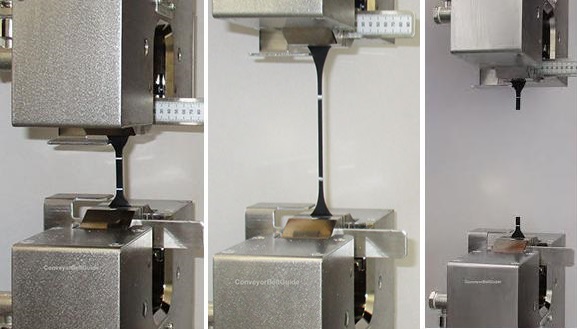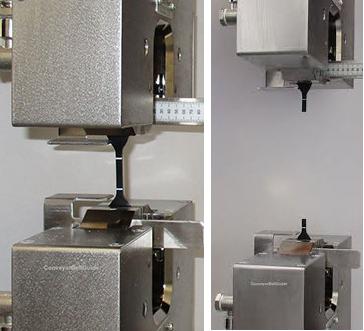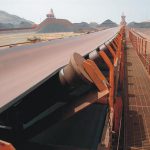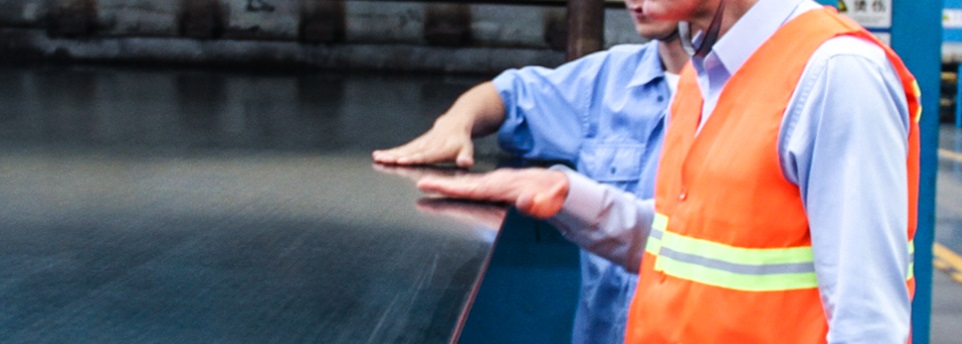Problems and solutions that often occur during the use of rubber conveyor belts
Rubber conveyor belts are consumables, and various situations will occur during use. SUNGDA conveyor belt company summarizes them here.
First, the conveyor belt slips. Slippage is a common situation. This problem is not caused by the quality of the conveyor belt. It is probably caused by the overload of the conveying capacity or the reduction of the friction traction of the conveyor pulley or the jamming of the conveyor belt.
Causes of slippage:
1. Rubber conveyor belts are generally ductile, that is, they will stretch a little after a period of use, so that the tension of the conveyor belt is not enough, which reduces the frictional traction and causes the conveyor belt to slip.
2. When the contact surface between the driving roller and the tape enters muddy water and dust, the friction coefficient will drop sharply, causing the conveyor belt to slip.
3. The buried pressure of the materials, the winding of debris, and the damage of the idler rollers will cause a large number of idler rollers to fail to operate. The resistance of the damaged conveyor belt or joint passes through the idler rollers, causing the conveyor belt to deviate seriously and the cargo is loaded. Too much will make the conveyor belt too resistance and cause slippage.
Second, how should the conveyor belt slip
1. The operation of the conveying system should be strengthened, the material conveying volume should be strictly controlled, and overloading is strictly prohibited. With the use of a slip protection device, it can send a signal when the conveyor belt slips and automatically stop, which is convenient for maintenance.
2. Regularly or timely adjust the conveyor belt tension. Equipped with corresponding tensioning device, it can be solved by adding counterweight when slipping; for slipping in rain and snow weather, the configuration has the function of automatically increasing the tension compensation, and the function of automatic stop when the belt is broken.
3. Prevent rain and water, and take protective measures. If necessary, increase the conveyor non-working surface cleaner. The operator’s sense of responsibility is also important. It is necessary to remove mud, water and materials on the conveyor pulley in time.
4. Conveyor belt aging crack and longitudinal tear
There are several reasons for this situation:
(1) If the distance of the conveyor line is too short, the number of deflections exceeds the limit, and it will age in advance.
(2) Friction caused by friction with fixed hard objects during operation.
(3) The conveyor belt rubs against the frame, causing burrs and cracks.
(4) The conveyor belt will be caught by sharp objects during operation, and it will be torn longitudinally if it continues to run.
(5) The surface of the conveyor belt is contaminated with oil or chemicals.
(6) If the tension is too large, the tension on the conveyor belt will increase.
5. Arch in the middle of the conveyor belt
In the convex arc section of the belt conveyor, the central arching phenomenon in the direction of the conveyor belt cross section often occurs, which will cause the tape to buckle. After stacking, when entering the reversing roller or driving roller section, the damage of the conveyor belt is exacerbated. The reason is that in the cross-section of the tape, the difference in the tensile force per unit length between the middle and the outside is too large, causing the conveyor belt to slide to the middle to form an arch or a discount. At this time, the groove angle should be reduced or the length of the transition section length should be lengthened to make the groove angle of the conveyor belt transition slowly. For the convex section conveyor, the radius of curvature of the convex section should be increased as much as possible and the idler groove angle should be reduced under the condition of satisfying the conveying capacity.
The solution is:
(1) Prevent the conveyor belt from hanging on the fixed member or the conveyor belt falling into the metal member.
(2) It may be considered to install a longitudinal tear protection device at the loading site.
(3) Store as required, and avoid using it for short distances.
(4) Adjust the tension in time to avoid long-term deviation.
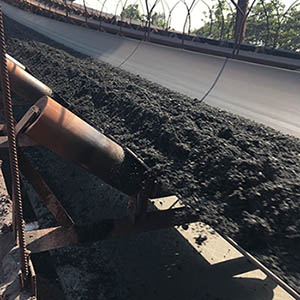
Tags: EP conveyor belt,Rubber conveyor belt

